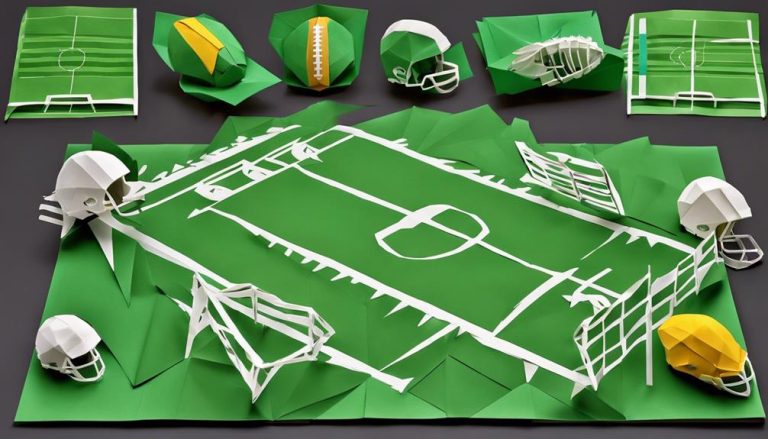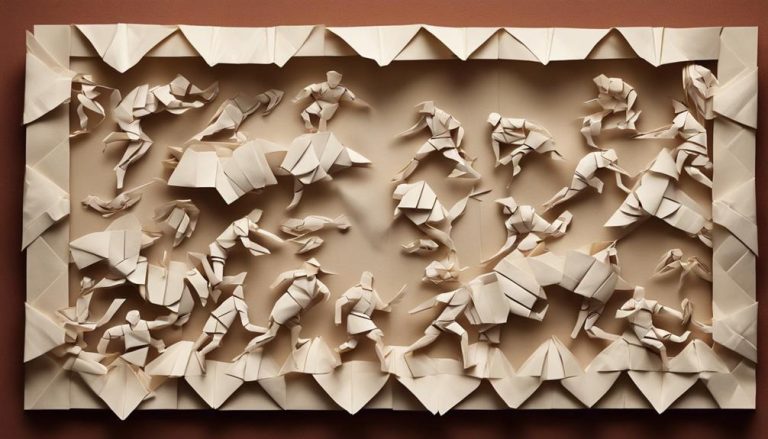General Rules of Mogul Skiing
Imagine yourself as a graceful dancer, swiftly maneuvering through a challenging routine. Just like in dance, mogul skiing requires precision, technique, and finesse. As you glide down the mountain, there are key rules to keep in mind to guarantee a successful run. From maintaining the right body posture to making strategic decisions on mogul selection, each aspect contributes to your overall performance. Ready to elevate your mogul skiing skills to the next level?
Proper Body Positioning
When tackling mogul skiing, maintaining proper body positioning is essential for stability and control on the challenging terrain. To excel in mogul skiing, focus on balance adjustment and weight distribution. Your balance adjustment is vital; keep your upper body upright, facing downhill, and your knees flexed to absorb the bumps. By doing this, you allow your skis to pivot quickly and smoothly, maneuvering the moguls with ease.
Proper weight distribution is a game-changer in mogul skiing. Keep your weight centered and evenly distributed between both skis. As you approach a mogul, shift your weight slightly back to initiate the turn, then forward as you exit the turn. This dynamic weight transfer allows you to maintain control and speed through the mogul field. Remember, the key is to flow with the terrain, not fight against it.
When skiing moguls, visualize a fluid motion where your body acts as a shock absorber, flexing and extending to adapt to the changing terrain. Keep your hands up and slightly forward, ready to assist in balance adjustments. By mastering balance adjustment and weight distribution, you'll find yourself gliding effortlessly through the moguls, feeling liberated and in control.
Efficient Pole Usage
To enhance your performance in mogul skiing, mastering efficient pole usage is key for maximizing your stability and control on the challenging terrain. Proper pole technique can assist you in maneuvering moguls with greater ease and fluidity. Here are some technique tips and equipment options to help you improve your mogul skiing skills:
- Planting Position: Focus on planting your poles slightly downhill and to the side when skiing moguls. This position allows for better balance and helps you initiate your turns more effectively.
- Timing and Rhythm: Coordinate your pole plants with your turns. Make sure that your pole plants are timed correctly to provide support and rhythm as you negotiate the bumps.
- Grip and Wrist Action: Maintain a firm grip on your poles while allowing for wrist movement. This combination enables you to handle your poles swiftly and efficiently through the mogul field.
- Pole Length and Material: Consider using shorter poles made of lightweight materials for mogul skiing. Shorter poles are less likely to get caught in the bumps, while lightweight materials reduce fatigue during extended mogul runs.
Controlled Speed Management
Efficiently managing your speed in mogul skiing is essential for maintaining control and fluidity through the challenging terrain. To achieve controlled speed management, mastering carving techniques and braking methods is important. Carving involves using your skis to make clean turns on the moguls, allowing you to control your speed while maintaining momentum. Proper weight distribution is key; shift your weight forward to initiate turns and backward to control speed on descents.
Edging strategies play an important role in speed management. By adjusting the angle of your skis against the snow, you can control your speed through the moguls. Utilize your edges to carve precise lines and maintain stability on the slopes. When moving through moguls, focus on smooth, controlled movements to avoid sudden speed changes that may lead to loss of balance.
Braking methods such as skidding or sliding can also help regulate your speed in challenging mogul terrain. However, rely more on carving techniques to maintain a fluid skiing experience. Remember, mastering the balance between speed and control is the key to conquering moguls with confidence. By combining carving techniques, weight distribution, and edging strategies, you can effectively manage your speed and maneuver through the terrain with precision and grace.
Precise Mogul Line Selection
Mastering precise mogul line selection plays a pivotal role in the difficult terrain with control and confidence. To excel in navigating moguls effectively, consider the following key points:
- Skier Mindset:
- Your mental approach is crucial in mogul skiing. Stay focused, anticipate the terrain ahead, and maintain a positive mindset to tackle the challenges with determination.
- Terrain Analysis:
- Before entering a mogul field, analyze the terrain for variations in snow conditions, mogul size, and spacing. Understanding the layout will help you choose the best line for a smoother descent.
- Visualize Your Line:
- Visualizing the ideal path through the moguls before starting your descent can enhance your performance. Plan your turns, identify key points for speed control, and commit to your chosen line.
- Adaptability:
- Flexibility is essential in mogul skiing. Be prepared to adjust your line based on the real-time conditions you encounter. Stay agile, react to changes swiftly, and maintain your flow down the slope.
Fluid Turns Execution
Developing a fluid technique for executing turns in mogul skiing requires consistent practice and proper body positioning. When it comes to fluid turns execution, two key elements play a critical role: edge control and weight distribution.
To achieve seamless turns in moguls, mastering edge control is essential. Utilizing your edges effectively allows you to initiate and maintain your turns with precision. As you approach a mogul, focus on rolling your ankles to engage the edges of your skis. This action provides you with the grip needed to navigate the varying terrain of the moguls effortlessly. By actively managing your edges through each turn, you can smoothly shift from one mogul to the next, maintaining control and speed.
In addition to edge control, proper weight distribution is vital in executing fluid turns. As you ski through moguls, shift your weight dynamically between your skis. When entering a turn, distribute your weight towards the downhill ski to initiate the arc effectively. As you progress through the turn, gradually transfer your weight to the uphill ski to complete the maneuver smoothly. This continuous adjustment of weight distribution guarantees stability and agility, allowing you to flow through the mogul field with grace and confidence. Mastering edge control and weight distribution will elevate your mogul skiing experience, enabling you to carve fluid turns effortlessly.
Frequently Asked Questions
What Type of Equipment Is Best for Mogul Skiing?
For mogul skiing, the best equipment includes boots with good ankle support, poles of the right length for your height, goggles that fit snugly, and a helmet that stays in place. Choose wisely for top performance.
How Can I Improve My Endurance and Stamina for Mogul Skiing?
Struggling with endurance for mogul skiing? Rev up your cardio training and strength workouts. Consider nutrition and hydration too. Fuel your body right, stay hydrated, and push yourself further on the slopes.
Are There Any Specific Warm-Up Exercises I Should Do Before Hitting the Moguls?
Before tackling moguls, do a dynamic stretching routine to prep your muscles. Start with a cardio warm-up like jogging. Incorporate plyometric exercises for power. Focus on dynamic movements to mimic skiing actions.
How Do I Handle Skiing Moguls in Varying Weather Conditions?
When skiing moguls in varying weather, adjust technique for snow conditions and visibility. Dress in layers for changing weather. Stay hydrated to enhance performance and endurance. Prepare mentally for each challenge on the slope.
What Should I Do if I Fall While Skiing Moguls?
If you fall while skiing moguls, focus on recovery techniques like turning to the side or sliding to a safe stop. Prioritize injury prevention by avoiding sudden movements. Mental preparation and building confidence are key for a smooth descent.






